Chocolate can taste creamy and sweet and bitter and umami and sour... but is chocolate vegan? The short answer is that it depends; it can be. Many dark chocolates are vegan, and a small but rising number of white and milk chocolates are vegan.
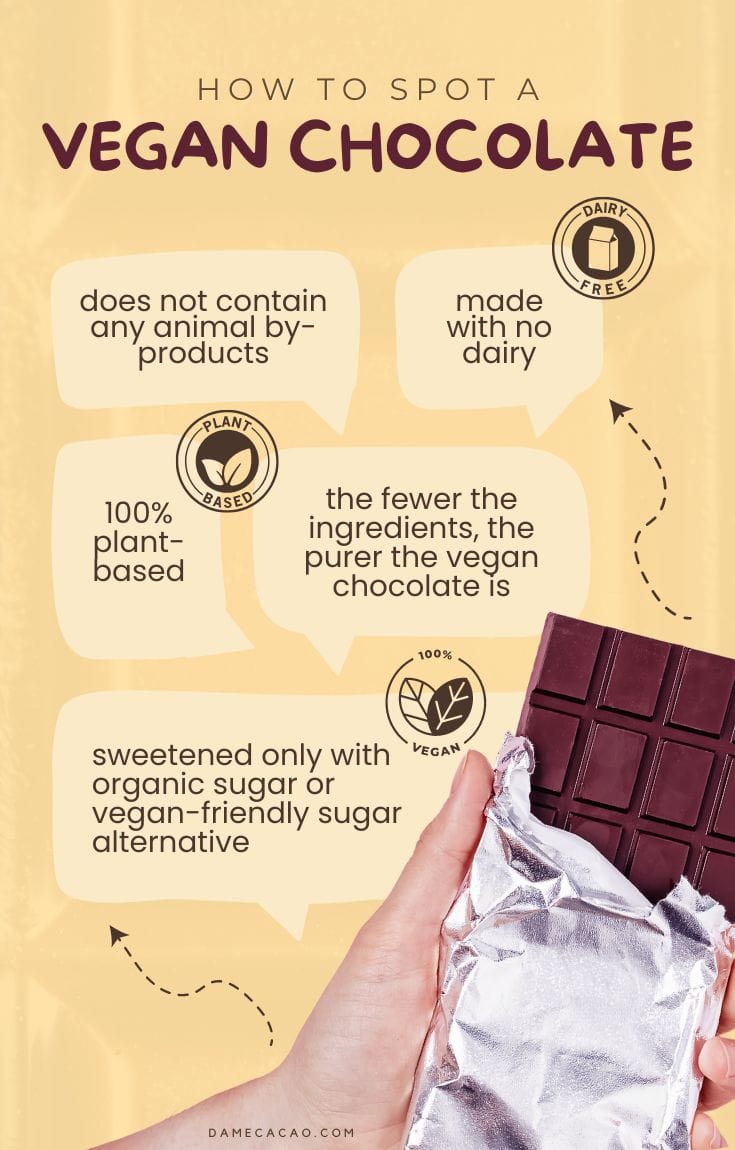
There's currently no vegan ruby chocolate, but I have no doubt that it's in the works. For those wondering how to tell which chocolate bars are vegan, I recommend keeping an eye out for two ingredients: milk and sugar. Yes, sugar!
While not all chocolate contains milk, most all chocolates does contain some form of sugar. The cases in which sugar isn't vegan is when the sweetener is bleached with bone char. One workaround for this is to only buy chocolates made with no dairy and sweetened only with organic sugar or sugar alternatives.
Luckily, other than milk and sugar, the main ingredient of chocolate is cacao, which is also known as the chocolate plant. Cacao, also known as cocoa, is a tropical fruit whose large pods are harvested and their seeds processed into the best chocolate bars in the world, as well as the worst.
By the end of this article, you'll feel fully equipped to analyze the wrapper of any chocolate bar to tell if it's vegan or not, and if it's worth investing in! While not all chocolate is vegan, finding good vegan chocolate is not only possible, but worth the effort.
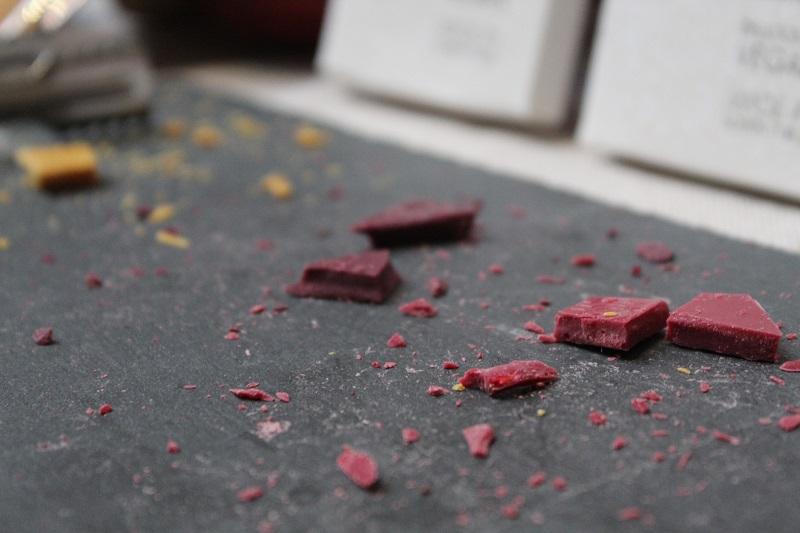
Jump To
How Chocolate Is Made
Before we dive into what makes chocolate vegan (or not), it can be helpful to understand what chocolate is and how it's made. All chocolate is made with the fermented & dried seeds of the tropical Theobroma cacao tree. The seeds are harvested from the fruits of the tree and then processed.
Once they're all dry, they're left to rest for a bit and sent to a chocolate factory, where they're almost always roasted and sweetened before being ground into chocolate. To elaborate a bit more, there are around 10 steps of the chocolate making process.
It begins with growing & caring for cacao, and then harvesting, fermenting, drying, and shipping that cacao. Once it arrives at a chocolate factory, the cocoa beans need to be sorted & cleaned, roasted, peeled, ground, and conched into the smooth sweet stuff we know as chocolate.
And these are just the steps to get to chocolate in a bowl, much less to prepare it for sale & shipment! So how did humans learn to do all of these things to cocoa to turn it into chocolate?

History Of Modern Chocolate
Cacao cultivation by humans may have started as far back as 5500 years ago, in modern-day Ecuador. But from there, it managed to travel north up into Central America, where the seeds are still grown today.
Possibly the most famous ancient consumers of cacao, the Aztec and the Mayan peoples, were the first cacao-cultivating groups the Europeans met in the Americas. Their practice of consuming chocolate as a ceremonially-important, spiced beverage had a lasting impact upon how chocolate was consumed in Europe.
But Mesoamerican "chocolate" beverages likely tasted nothing like modern mass-market chocolate, vegan or not. In fact, their (mostly) vegan chocolate drinks used lots of spices and a base of water & natural dyes to create a reddish libation, meant to energize warriors and resemble the blood of their human sacrifices.
Honey was very occasionally added by nobility, to sweeten the creation, but I digress.

Up until bone char was introduced to the sugar industry, most all cacao-based beverages were actually just versions of vegan hot chocolate. That bitter beverage was brought to Europe— most of the ceremonial preparation discarded— and then sweetened with Caribbean sugar and eventually prepared with milk instead of water.
Over the next few centuries these European powers brought cacao all over the world, to every region they invaded and successfully took over. As cacao was shipped from these global colonies to the European powers, consumption practices around chocolate also slowly shifted.
Milk was added, as mentioned above, and in the mid-19th century, the portable chocolate bar was invented in England. Eventually, cocoa solids and cocoa fat were separated such that they could be used in various industries.
Cocoa butter became very popular in the cosmetics industry, while cocoa solids (cocoa powder) became popular as a flavor for lots of desserts. The world's obsession with chocolate flavor actually became the downfall of the food's largely vegan and largely healthy origins. So how can we get back to chocolate that's good for us?
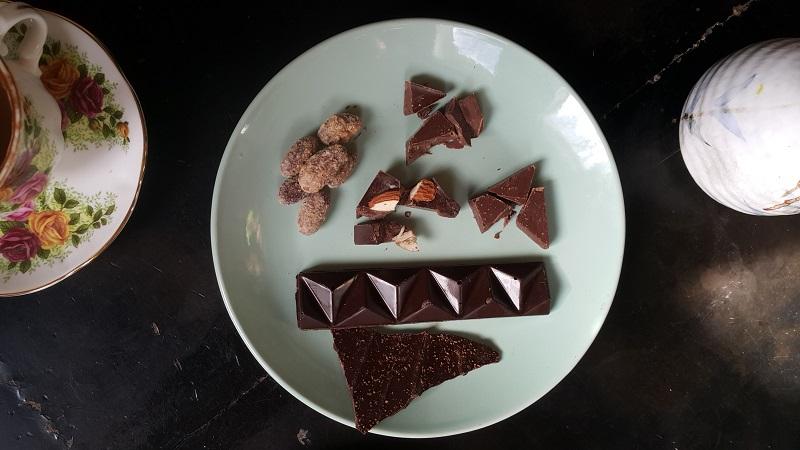
Is Dark Chocolate Vegan?
Quite simply: not always. Dark chocolate can be vegan, of course, and there are great vegan dark chocolate bars being made these days. But just because there are no animal products directly put in chocolate doesn't mean that animal products haven't played a role in their production at some point, deeming them non-vegan friendly.
Technically, the only required ingredient to make a dark chocolate is cacao. But most all dark chocolates also include some type of sweetener, usually white sugar (which is not usually vegan). So the simplest way to find a vegan dark chocolate is to look for a bar made with only cacao and organic sugar, or cacao and an alternative sweetener (other than honey).
When looking at the ingredients, you'll also be able to check if there are any added nasties, like PGPR, vanillin, and artificial flavors. A quick interlude on dark chocolate here: when searching to answer the question "does dark chocolate have dairy?" I had this flashback to reading the ingredients of a Hershey's Special Dark bar.
Note that the name is "Special Dark," not "Special Dark Chocolate." This is because Hershey's Special Dark bar is not only not dark chocolate, but it contains three different forms of milk! That's in addition to the emulsifiers, fake flavorings, and alkalized cocoa powder used to lower their cost of production.

Unfortunately, this means finding vegan dark chocolate can take some extra effort. The only dark chocolates you can be sure are vegan-friendly are ones made by companies with vegan values as a part of their structure, like Solkiki Chocolate or Raaka Chocolate.
Alternatively, to find vegan dark chocolates you can trust in the supermarket, look for products which contain a vegan-friendly sugar alternative, like coconut sugar or monk fruit, or maybe sugar alcohols such as maltitiol or erythritol.
Vegan chocolate truffles are often made with coconut oil or even vegan butter to replace the dairy. These gourmet chocolates will be more expensive, and are definitely harder to find. Most are also owned by the same massive conglomerates using cheap cocoa harvested with exploitative labor, which is why I always recommend buying craft chocolate.
It's worth the search to be able to stick to your values, and end up with a more delicious product in the end.

Is Milk Chocolate Vegan?
Well, no. With a title like "milk" chocolate, it seems impossible that milk chocolate doesn't contain animal products (and it does). But surprisingly, just like your morning latte, there are ways to make a milk chocolate that's vegan-friendly and delicious.
These are generally marketed as dairy-free milk chocolates, or just vegan milk chocolates, though they're a bit harder to find in your average grocery store. Just like making any other chocolate, making milk chocolate starts with cacao seeds, also called cacao beans.
These fermented and dried fruit seeds are 100% vegan, as is the added cocoa butter (fat of the cacao beans) needed to make milk chocolate. Assuming you're buying high quality vegan milk chocolate, there should only be 2 other ingredients in milk chocolate: milk powder, and sugar.
Cane sugar is the most common sweetener used in chocolate making, and it's almost always not vegan. While vegan chocolate companies take extra care to source vegan sugar, or even use a vegan-friendly sweeteners in all their products, there’s still the consideration of milk powder.
Some vegan chocolate makers even produce only dark chocolates, to avoid the question of milk powders altogether. But others have turned to milk alternatives, such as coconut, to be able to make vegan milk chocolates.
Keep in mind, though, that these chocolates cannot legally be called milk chocolates since they don't contain any dairy; they're actually classified as dark chocolates. So when seeking a vegan milk chocolate, look for either raw, organic cane sugar, or a nontraditional sweetener.
Vegan cane sugar alternatives include fruit sugars like monkfruit or date, or even low-glycemic sweeteners like xylitol or maltitol. Insofar as the milk powder, these days there are numerous alternatives for cow's milk.
Some popular alternatives for making vegan milk chocolates include coconut or oat milk, as well as a number of defatted nut powders, with soy milk powder slowly gaining popularity in Asia and parts of Europe.
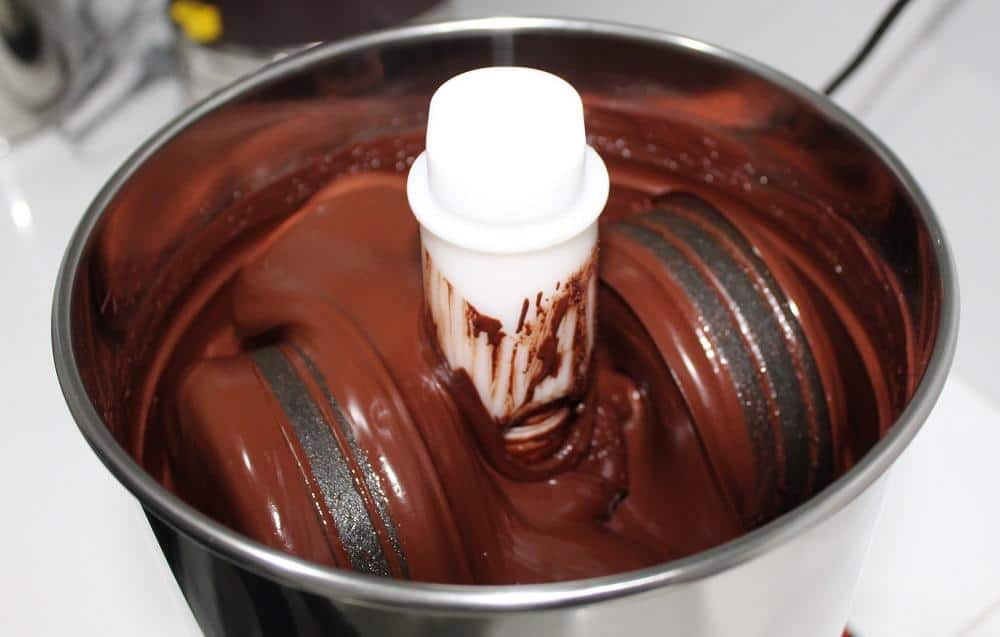
Is White Chocolate Vegan?
The cacao seeds from which chocolate is made, which are also called cacao beans, are about half fat. While much of that fat is pressed out and used in the cosmetics industry, with the leftovers pulverized into cocoa powder, some of it goes towards making white chocolate or milk chocolate.
This fat, called cocoa butter, is a fruit fat like avocado or olive oil, and therefore 100% vegan. However the three ingredients needed to make white chocolate are cocoa butter, sugar, and milk powder. This means that any random white chocolate you buy off the shelf is probably not vegan.
However both sugar and milk powder can be replaced with vegan-friendly alternatives, like coconut sugar or erythritol, and oat milk powder or coconut milk powder. In fact, many vegan chocolate brands are working on or already sell some delicious vegan white chocolate bars.
Do note, however, that because vegan white chocolates don't contain dairy, they're not legally considered white chocolate. So how do you tell if a random white chocolate product on the shelf is vegan? The answer lies in the ingredients list.
Any white chocolate of good quality will list cocoa butter (also called cacao butter) as the first ingredient, followed by a sweetener and a milk alternative. If the sweetener in the product is made from cane sugar, then it should be certified organic in order to be sure that it's vegan.
A sweetener from any other source (except honey) is already naturally vegan. When it comes to milk powders, these days there are plenty of dairy-free options. One of the more common choices is coconut milk, though I've also tried delicious bars which use almond, oat, hazelnut, rice, and soy milk powders.

Is Ruby Chocolate Vegan?
At this time, there is no such thing as vegan ruby chocolate. While I'm not ruling out the possibility of a vegan line of ruby chocolate in the future, the creation is the property of Swiss-Belgian company Barry Callebaut, and they maintain all control over its production.
What makes ruby chocolate not vegan is the presence of milk powder, as well as the unclear source of the sugar used to sweeten the confection. Ruby chocolate is made in the style of a milk chocolate. It starts with cocoa butter and sugar, then milk powder and some "ruby" cocoa beans are added, as well as a few additional ingredients, like citric acid.
Some people believe that those additional ingredients & processing techniques are behind what makes the chocolate taste so fruity, while the milk powder and sugar make the base flavor creamy and sweet.
If you were to formulate a vegan ruby chocolate bar, you'd need to swap out the regular sugar for a vegan-friendly alternative or simply organic sugar. But that part is easy. The difficulty would be in sourcing a dairy-free milk powder alternative, like coconut or oat milk powder, that doesn't noticeably affect the chocolate's overall flavor.
However all of this research and development will be in the hands of Callebaut, as they hold the necessary patents and licenses to manufacture the stuff, and eventually make it available to the public.
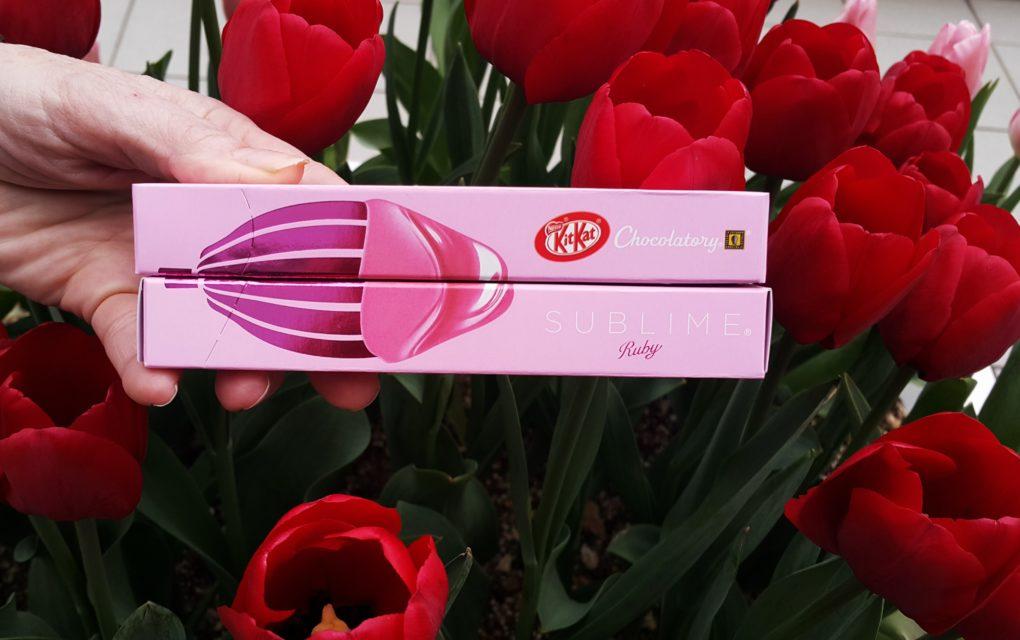
Vegan Chocolate Ingredients
I've included the most common and basic ingredients of chocolate below. Some of these have aliases or other names they're called on bars wrappers, so I've mentioned those in italics. Please leave a comment if you're curious about any other ingredients in your vegan chocolate bar, or even your vegan chocolate chips!
Also, note that cacao and cocoa are words that can be used interchangeably, and seeing one or the other on packaging says nothing about the quality of that chocolate.
Cocoa beans or cacao beans: the seeds of the tropical Theobroma cacao tree, which are almost always grown to be processed into chocolate. Also called: cacao seeds, cocoa seeds, cocoa mass, cacao mass, chocolate liquor, cocoa liquor, cacao liquor, and chocolate (technically once the beans are ground, they are chocolate whether it's sweetened or not!).
Cocoa nibs or cacao nibs: pieces of cacao beans with the shell removed, often after roasting.
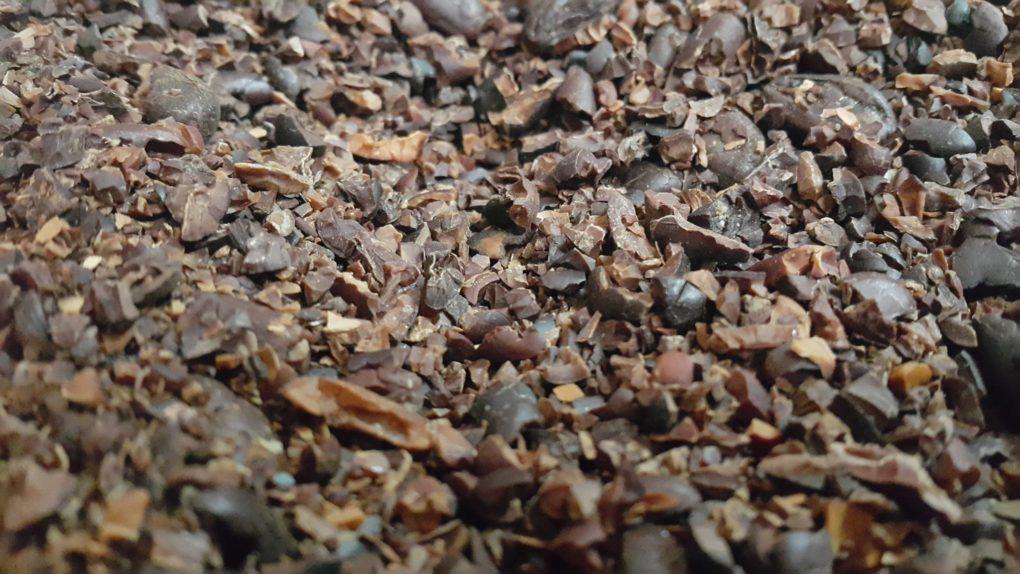
Cocoa butter or cacao butter: the fat of the cacao bean, which makes up just over half the weight of a cacao bean. Therefore cocoa butter is indeed dairy-free, despite the inference of "butter." Also known as cacao fat.
Cocoa powder or cacao powder: the solids of the cacao seeds, including all of the antioxidants and nutrients. In cheaper chocolate they use alkalized cocoa powder, which has been processed to remove most of the minerals and nutrients, and make the flavor more basic. Also known as cacao solids.
Sugar: a vague term often referring to white sugar processed from either cane grass or sugar beets; not always vegan. If you see any type of organic sugar, you can be sure that that is vegan.
Some vegan-friendly white sugar alternatives include fruit sugars like monkfruit or date, and even low-glycemic sweeteners like xylitol or maltitol. Also known as: raw cane sugar, evaporated cane juice, and raw sugar.

Milk powder: the powdered version of a mammal's milk, usually cow's milk unless otherwise specified. You may also see some fruit, nut, and grain powders called a "milk powder;" coconut milk powder, for example, is non-dairy and vegan-friendly. Also known as: cream powder, milk fat, whole milk powder, and skim milk powder.
Lecithin (soy or sunflower): a fatty substance which attracts both water and fatty substances; most often derived from plant sources, specifically soy. Lecithins of all kinds are used for smoothing chocolate's texture without needing to add extra cocoa butter, which is expensive. Also known as: soya lecithin, emulsifier (soy), and simply soya.
Vanilla extract: extractives from or pieces of ground vanilla, a spice native to modern-day Mexico and now grown around the world. Also known as: vanilla powder or vanilla beans. Vanillin is an artificial vanilla flavoring.

Even though chocolate comes from the fruit of a tropical plant, those origins are rarely honored during the trip from farm to factory to your hands. If you’re not sure whether or not a chocolate is vegan, there are some ways to learn more about any given chocolate, just by looking at the back label.
Keep an eye out for honey and for these dairy ingredients in particular: milk powder, lactose, whey, and casein. Unfortunately, it’s not always clear on the sugar front, but organic or not, both coconut sugar and xylitol are two more common vegan-friendly sweeteners.
Just keep in mind that "organic" may mean a lessened environmental impact, but it doesn't mean that the cacao was sourced ethically or contributed to an ethical supply chain. Craft chocolate companies are generally your best bet for finding vegan chocolate bars made with sustainably-, equitably-, and transparently-sourced ingredients.
"Our product isn't really chocolate; it's systemic change"
Gillian Goddard, Owner of Sun Eaters Organic (craft chocolate company)
Vegan Chocolate FAQ
Yes. This is similar to the above question asking "is cocoa butter dairy?" Cocoa butter is the fat pressed from the seeds of the fruit of the cocoa tree, so it's a plant-based fat, like avocado oil or grape seed oil. You can even use cocoa butter for cooking vegan dishes which need a high smoke point oil, like a quick stir-fry.
Yes. All cocoa powder is the solids of the seeds of the cocoa tree's fruits, with a small amount of residual fat. Cocoa powder is a vegan ingredient.
It depends. Vegans can eat any plain chocolate as long as there's not any dairy, honey, or non-organic sugar in it; this is how vegan chocolate cake is possible. Be sure to look carefully at the ingredients list for any of these things.
Theoretically, a raw cacao product of any kind, be it chocolate, cocoa butter, or cocoa powder, is made with unfermented cacao. However, unfermented cacao tastes like bitter earth with zero hints of chocolate. Most "raw" cacao products are actually fermented and unroasted cacao, which taste less like dirt and just a touch like chocolate. Raw cacao is also said to be higher in polyphenols (the antioxidants that make chocolate so good for you), but that's not been scientifically proven since levels vary so much between varietals. Either way, it doesn't make up for the offensive flavor.
Non-dairy chocolate is more common now than than ever. While you can surely find some vegan chocolate in the supermarket, you can also shop some great brands online.
Yes! There are actually lots of vegan candy bars out there, and since I'm a craft chocolate advocate, I'd always advocate for a craft candy bar with chocolate in it. I recommend looking at Oregon Bark and Compartes Chocolate, and looking into some vegan craft chocolate companies which make delicious candy-like inclusion bars. My favorite US-based vegan maker is Charm School Chocolate, while Solkiki Chocolate Maker is a great option in the UK.
The best vegan chocolate is the one in your hands! Ba-dum-ch. No, but in all seriousness, chocolate can vary so much from one bar to another that this is like asking what the best snack food is. Everyone will have a different answer. My current favorite fully-vegan maker is mentioned in the answer above, but when you're looking for more specific things you'll get a more specific answer. For example, with baking ingredients like a vegan chocolate chip, my favorite ones are from French Broad Chocolate Lounge, in North Carolina (ditto for their vegan hot chocolate & vegan candy bars). But if you're looking for the best vegan chocolate desserts, or even vegan chocolate recipes, I recommend checking out sites like The Clever Meal and Chocolate Covered Katie.
Not necessarily! Vegan chocolates can and do still contain large amounts of sugar, and thusly should be consumed in moderation.

I hope you found this post on vegan chocolate to be helpful! If you have any tips for favorite products or where to search for recipes, please drop them down below!
Pin this guide to vegan chocolate shopping!


















Comments
No Comments